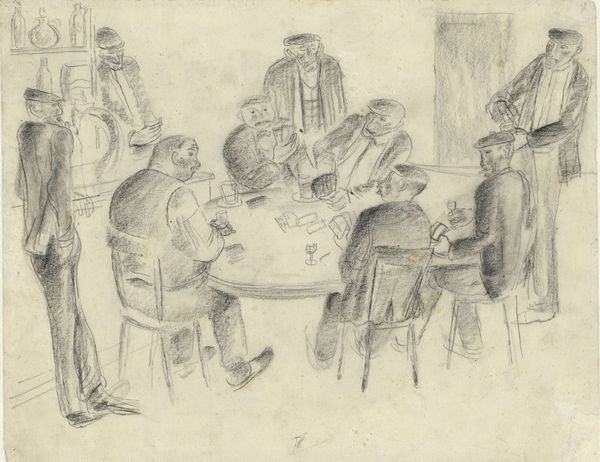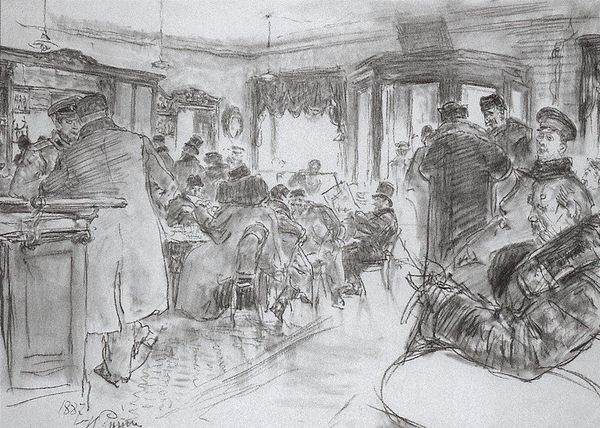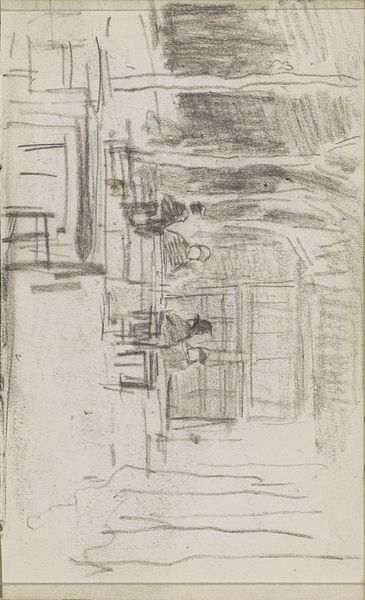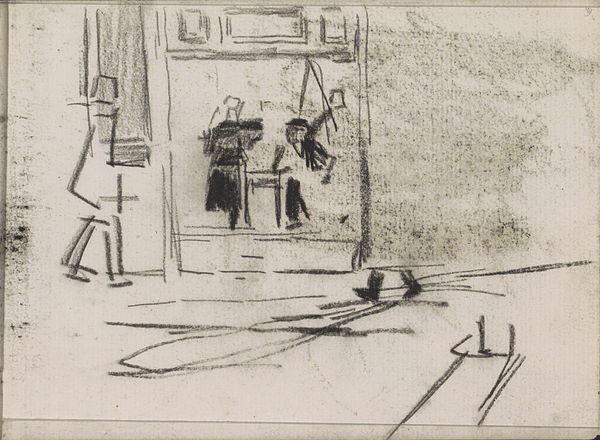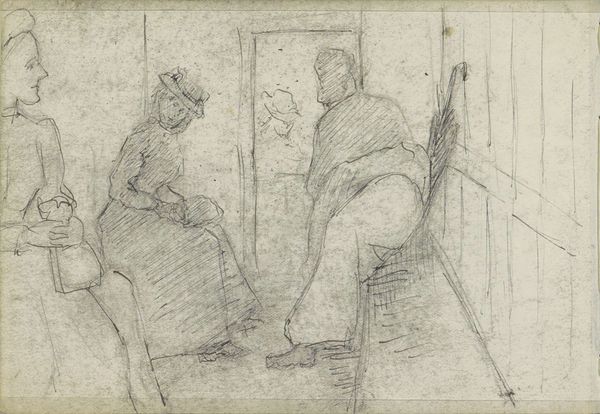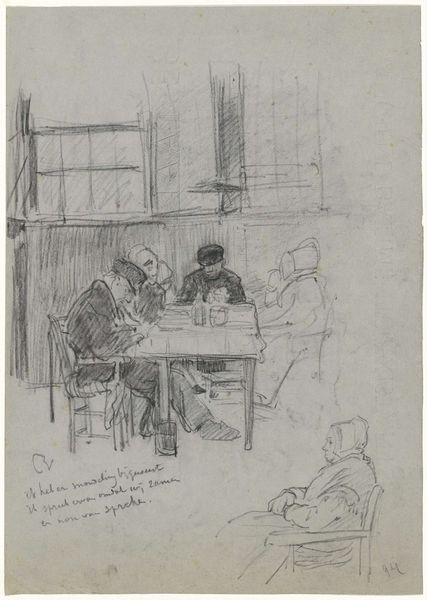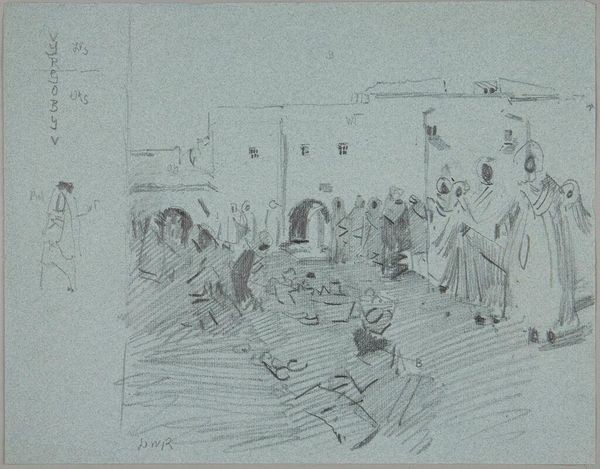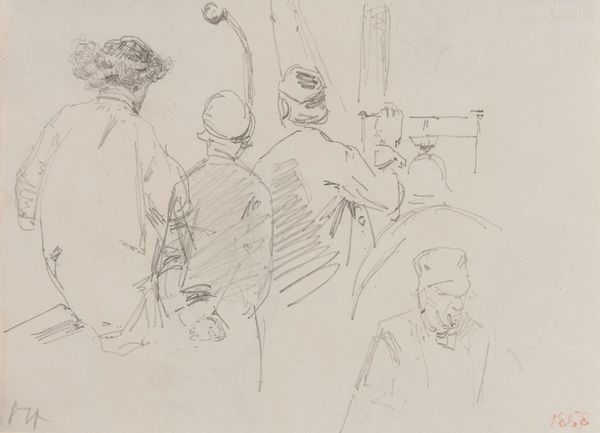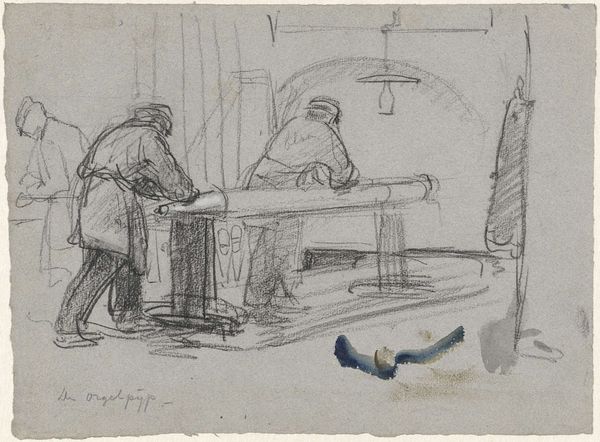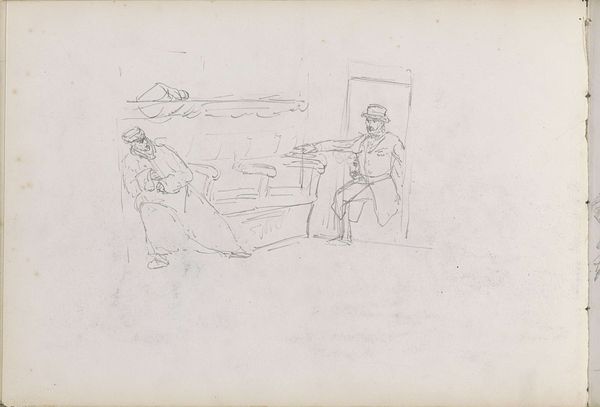
Copyright: Rijks Museum: Open Domain
Editor: This pencil drawing, "Mannen aan tafels, mogelijk in een café," by Isaac Israels, made sometime between 1875 and 1934 and currently at the Rijksmuseum, gives such a fleeting sense of a moment captured in a busy place. What do you see in this piece? Curator: The most compelling formal element is the artist’s confident use of line. Notice how the composition favors asymmetry, immediately creating a sense of dynamism. There’s a sophisticated push and pull between the defined forms in the foreground and the more ambiguous shapes suggesting depth. Do you find the application of graphite contributes to a particular textural quality? Editor: Yes, the sketchiness, the way the lines almost vibrate, definitely adds to that sense of immediacy, but I find it a little unsettling that many faces lack definition. Curator: Precisely! The incomplete rendering prompts the viewer to actively engage in the completion of the forms. It challenges the traditional notion of portraiture, placing greater emphasis on the suggestion of atmosphere rather than precise representation. How does the restricted palette of blacks and greys affect your perception of the space depicted? Editor: It creates a sense of intimacy, maybe even a bit of melancholy, as if we’re catching a private glimpse into their world. I hadn't thought about how actively I had to "fill in the gaps." Curator: A productive engagement with incompleteness often leads to richer, more nuanced understandings. Israels' work offers a sophisticated interplay between suggestion and representation. Editor: I see it differently now, paying more attention to its technique rather than its lack of clarity. Thanks!
Comments
No comments
Be the first to comment and join the conversation on the ultimate creative platform.
